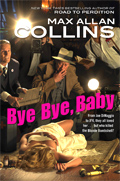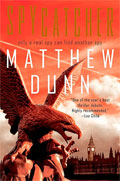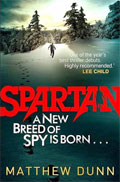As anyone who has spent serious time around a large number of cookbooks can tell you, the whole home chefing thing is a pretty sexist place. Not the world of professional chefs, obviously, where a large number of the big honc

hos in well known kitchens are male, for whatever reason. Even so, by and large, the idea remains that home kitchens are for girls and, since boys are stupid, they’d best stay out of there anyway. I’m just sayin’.
Naturally, and of course, all of this is a lot of hooey. There is simply no reason on Earth that men can’t be competent in the kitchen. As proof, if proof were needed, I could go back to the whole professional chef example. But I won’t. I became a fair hand in the kitchen back in my single days, and I remain calm and competent to this day. At the same time, I remember workplace lunch times when I was single. The people I worked with would marvel aloud at the concoctions I’d cook up for myself, sometimes even professing that they didn’t believe I could be doing it myself. And since my job was in the art department and I got paid to make stuff, I never really understood this. How did they figure I could manage to execute a complicated design to the specifications of their clients and salespeople, yet not manage a simple -- albeit beautiful -- sandwich?
All of this came back to me when I sat down with
Esquire: Eat Like A Man (Chronicle ) a book which, despite its sexist premise and blow-hard execution is filled with the kind of food most men I know would certainly eat and enjoy. Created by the
Esquire editorial team, the recipes come from chefs said team respects. “And each of the recipes was also tested by
Esquire’s male editors,” writes editor in chief, David Granger, “at home in their modest kitchens for their friends and families.”
And I gotta say that, of all the books skewed in this way that I’ve ever seen, this one is the most manly. This is big, robust food. And there’s lots of meat so manly vegetarians will likely want to find their own book. Each recipe includes a difficulty scale, which makes it easy to see at a glance if the recipe you’re looking at is appropriate for your skill level. The book would also seem to be geared at the guy who cooks occasionally and so is not thinking a whole lot about health or fitness while working with the book. At least that’s the idea I got from recipes like Duck-Fat Potatoes (a quarter cup of duck fat to cook a pound of potatoes), Bourbon and Brown Sugar Salmon, Coca-Cola-Brined Fried Chicken, and a whole bunch of sandwiches so decadent, it’s hard to choose just one or two but certainly the French Toast BLT with Roasted Garlic Vinaigrette is close to the top of the heap. Stuffed Meat Bread (pretty much as it sounds) comes an easy second.
As time goes by, I don’t know how much I actually use
Eat Like A Man, but I’m going to keep it around. It’s actually a very good all around cookbook, with strong versions of American classics and the kind of food a lot of us wish we could eat every day… if we weren’t keen on watching our girlish figures! ◊
David Middleton is art director of January Magazine as well as editor of the art and culture section.Labels: Cookbooks, David MIddleton





































